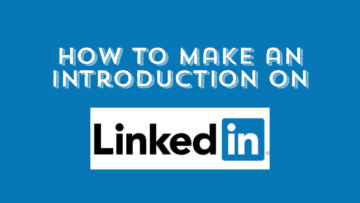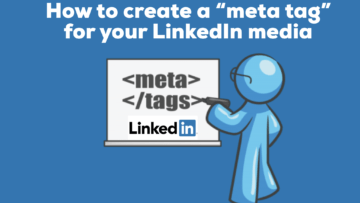Do you have a career portfolio or professional portfolio as a client seeker, job seeker, or an employed career climber?
Below are several tips on how to build an impressive career portfolio. You must keep it updated and always consider it a work in progress.
Your impressive career portfolio can be digital or it can be printed. If your career portfolio is digital, you can add it to your LinkedIn profile as a media attachment as a PDF, Word document, or PowerPoint. You can also include a link from your website, a Google doc, a Google sheet, or a Google slide presentation, for example.
If you use Canva.com, you can create a link to share or download a PDF and add it as a document. Canva Pro is my personal favorite, and I use it daily.
When creating a document on your LinkedIn profile, there is a 300-page limit, and the file size must be no greater than 100 MB. In addition, the maximum resolution for images is 36 megapixels, and the word count must be less than one million words.
You can also showcase your career portfolio on the Featured Section of your LinkedIn profile, so it gets more eyes on it when people visit your profile.
If you want an online portfolio that you can build yourself and don’t mind renting online space on someone else’s platform, explore About.me, Behance.net, Crevado.com, Dribbble.com, Github.com, Google Sites, Portfoliobox.net, as examples, or other WordPress alternatives.
If you prefer to own your platform, you can join 43% of all website users who use WordPress, which is also my personal favorite and I use daily.
Suppose you are going for an interview or an in-person meeting with a potential client. You can print out a copy and visit your local office supply store or printing company, and they can spiral bind your document between a hard plastic bottom and a clear plastic top.
You can either create one example for yourself or make one to leave behind. If you plan to give someone a copy, make sure you personalize it with the company’s logo, if applicable.
SECTIONS YOU COULD INCLUDE, DEPENDING ON YOUR AUDIENCE OR THE PURPOSE
- Overview
- Personal Statement or Philosophy Statement
- Short Biography
- Cover Letter & Resume
- Degrees, Certifications, and Licenses
- Professional Development and Lifelong Learning
- Vocational Competitions
- Transcripts
- Skills
- Clearances
- Accomplishments
- Military Records, Commendations, Awards, Recognitions, Badges, Honorable Discharge, etc.
- Recognitions, Honors, and Awards
- Volunteering and Community Service
- In the News
- Publications
- Letters of Recommendation or Appreciation, Reviews, Testimonials, or Satisfaction Surveys
- References
- Written Reports, Summaries, or Evaluations
- Visuals (images, photos (or yourself or your work or displays), tables, charts, etc.
- Work Samples
- Lists of Companies You Have Worked With
- Other Documents Concisely Organized
If you need further convincing about the importance of a career portfolio, here is an excellent article to read on Harvard Business Review.
Take a step back and admire your portfolio because IT’S SHOWTIME! Remember that nobody else can toot your horn as well as you can!
NEXT STEPS
- Subscribe to my newsletter on LinkedIn for bright ideas to manage your career.
- Join as a member at https://httpsgreatcare.wpenginepowered.com/membership of the #1 business networking association on the Philadelphia Business Journal’s Book of Lists two years in a row! BTW, we are a 501(c)3 charitable volunteer-run nonprofit.
- Register on the events page for these upcoming online events noted below.
#greatcareersphl #careerportfolio #portfolio
AUTHOR BIO
Lynne M. Williams is the Executive Director of the Great Careers Network, a volunteer-run 501(c)3 nonprofit organization that provides career education and networking connections for 1) job seekers in career transition, including veterans, and 2) employed and self-employed for career management. She is also the President of ChemPharma.net and runs a Clubhouse session every Friday at 11 AM ET on the Thought Leadership Branding Club.
Aside from writing keyword-focused content for ATS resumes and LinkedIn profiles, Lynne is currently writing her doctoral dissertation on LinkedIn for Job Seekers. She is a contributing author on “Applying to Positions” in Find Your Fit: A Practical Guide to Landing the Job You Love along with the late Dick Bolles, the author of What Color is Your Parachute?, and is also a speaker on career topics.
This article is also published on: vista.today, montco.today, delco.today, bucksco.today and on the blog of greatcareers.org




